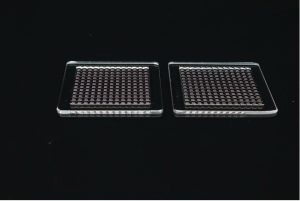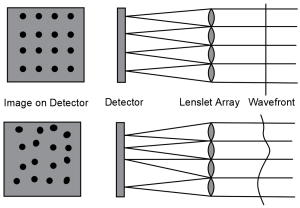Key Takeaways
- Sophisticated wavefront sensors are critical in high-precision optical metrology across a range of fields, including ophthalmology, astronomy, and semiconductor inspection.
- These systems depend on advanced optical engineering for wavefront sensor configurations, primarily through the implementation of custom optics such as microlens arrays, coatings, and detectors.
- This overview highlights how the use of custom optics in wavefront sensor technology enables precise wavefront reconstruction, improves sensitivity, and supports innovative applications. It also examines novel developments such as miniaturization, adaptive components, and instantaneous computational improvement.
Why Custom Optics Matter in Wavefront Sensors
Conventional optical components frequently fall short in demanding wavefront sensing applications. Tailored optics provide substantial performance improvements in resolution, sensitivity, and speed.
Key Design Elements
- Microlens arrays are an important component in Shack-Hartmann wavefront sensors; their tailored specifications directly influence system resolution, sensitivity, and precision.
- Customized detectors and coatings enhance light capture, minimize noise, and ensure compatibility with the microlens configuration.
- Sophisticated manufacturing approaches, including binary optics and hybrid-layer structures, unlock novel design versatility and performance levels.
- Adaptive optical elements allow instantaneous tunability, making sensors more flexible in dynamic settings.
- The Integration of computational imaging with AI lays the foundation for faster, more precise wavefront reconstruction.
- Application-specific customization provides superior results over general-purpose designs.
- Rising technologies such as spatial light modulators, chip-scale sensors, and MEMS deformable mirrors are further improving the capabilities and flexibility of wavefront sensing systems.

Microlens arrays. Image Credit: Avantier Inc.
How Wavefront Sensors Work
Wavefront sensors measure the deviation of an optical wavefront from its ideal shape. In a Shack-Hartmann configuration (the most commonly used design), a wavefront passes through a microlens array, with each microlens focusing a portion of the wavefront onto a detector.
A flat wavefront causes these focal spots to form a regular grid. Aberrations displace the spots, and by evaluating these displacements, the sensor reconstructs the complete wavefront profile.
This ability is indispensable in nanometer-scale accuracy applications, where even minor deviations can impair system performance.

Principle of a Shack-Hartmann wavefront sensor. Image Credit: Avantier Inc.
The Role of Customized Optics
Wavefront sensor precision and sensitivity are heavily influenced by the quality and customization of their optical components. Conventional off-the-shelf solutions frequently fall short of the requirements in precision optics, making customized design crucial. Shack-Hartmann sensors are built upon Microlens Arrays. Tailored parameters can optimize:
Source: Avantier Inc.
| Parameter |
Impact |
| Pitch |
Sampling resolution |
| Focal Length |
Sensitivity & dynamic range |
| Array Geometry |
Beam shape compatibility |
| Surface Quality |
Measurement accuracy |
Extended specs: Microlens arrays are available from 1 µm to several mm in size and support a broad spectral range (190 nm–10.6 µm).
Detector Matching and Alignment
- Tailored mechanical alignment guarantees fidelity
- High-performance CMOS or CCD
- Sub-pixel centroiding algorithms
Optical Coatings
- Multi-layer Designs: Support broadband performance
- AR Coatings: Reduce ghosting and stray light
- Wavelength-Specific: Optimize for UV, VIS, IR
Customization Strategies for Sophisticated Wavefront Sensors
Binary Diffractive Optics
- Utilize lithography to form phase-modulating structures
- Subwavelength control of light allows for miniaturized, multifunctional components
Hybrid Microlens Structures
- Dual-layer lenses with multiple refractive indices
- Minimize spherical aberration without increasing size
Adaptive Optics and Emerging Elements
- Electrically tunable microlens arrays
- MEMS deformable mirrors for compact instantaneous correction
- Spatial light modulators (SLMs) for dynamic beam shaping
Detection and Data Processing Innovations
- Instantaneous Reconstruction: GPU-based or ML-assisted processing
- Software SDKs: Tailored control and data evaluation workflows
- Phase and Intensity Sensors: Concurrent capture in a single frame
Compact Design and Embedded Systems
Wavefront sensors are becoming smaller and faster:
- Instantaneous correction for handheld biomedical or field devices
- Miniaturized MEMS-based sensors for mobile applications
- Photonic integration enables wavefront detection on a chip
Applications of Customized Wavefront Sensors
Wavefront sensors with customized optics are widely implemented across numerous sectors:
Source: Avantier Inc.
| Industry |
Application |
| Ophthalmology |
LASIK, IOL design, higher-order aberration mapping |
| Optical Fabrication |
Real-time surface inspection & alignment |
| Laser Beam Shaping |
Pulse & beam quality optimization |
| Astronomy |
Atmospheric compensation for telescopes |
| Quantum Optics |
Precise phase control |
| Bioimaging |
Label-free quantitative phase imaging |

An IOL sample. Image Credit: Avantier Inc.
Optical Design Example: Tailored Microlens Array in Laser Lithography
A semiconductor manufacturer needed nanometer-level wavefront control for a laser lithography system, but conventional microlens arrays fell short. The solution was a hybrid microlens array designed with:
- Non-standard pitch
- Extended focal length
- UV-optimized coating for 193 nm
Results:
- Increased yield and process stability
- 30 % improvement in beam shaping precision
- 45 % reduction in calibration time
Emerging Trends in Wavefront Sensing Technology
Wavefront sensing is experiencing rapid advancement, driven by multiple key trends:
- Instantaneous, Ultra-Fast Sensing: High-speed acquisition and processing make wavefront sensors appropriate for live imaging, high-throughput production, and adaptive laser systems.
- Miniaturization: Chip-scale wavefront sensors and photonic integration enable compact, embedded solutions.
- Computational Improvement: Machine learning and neural networks accelerate wavefront reconstruction and enhance precision.
- System Integration: Monolithic and hybrid designs minimize system complexity and boost mechanical stability for field-deployable tools.
- MEMS and SLM Integration: Increased use of MEMS deformable mirrors and spatial light modulators supports adaptive optics in smaller, more durable packages.
Conclusion
Tailored optical design is the foundation of high-performance wavefront sensors. From sophisticated microlens arrays to adaptive optics and computational control, custom components enable nanometer-level precision, instantaneous correction, and miniaturized system design.
As technology advances, precision optics will continue pushing wavefront sensing boundaries, making systems smarter, smaller, and more versatile.

This information has been sourced, reviewed, and adapted from materials provided by Avantier Inc.
For more information on this source, please visit Avantier Inc.